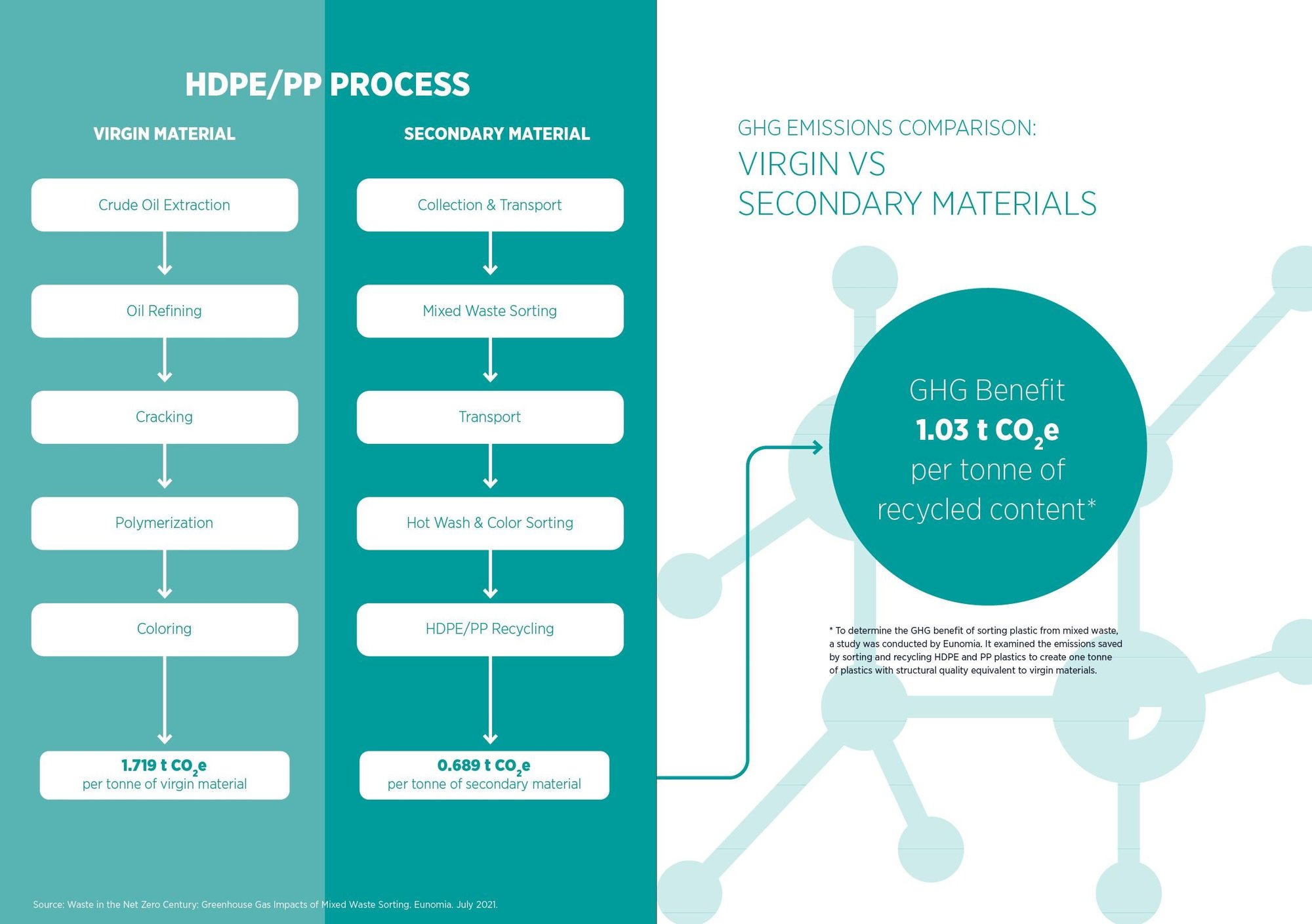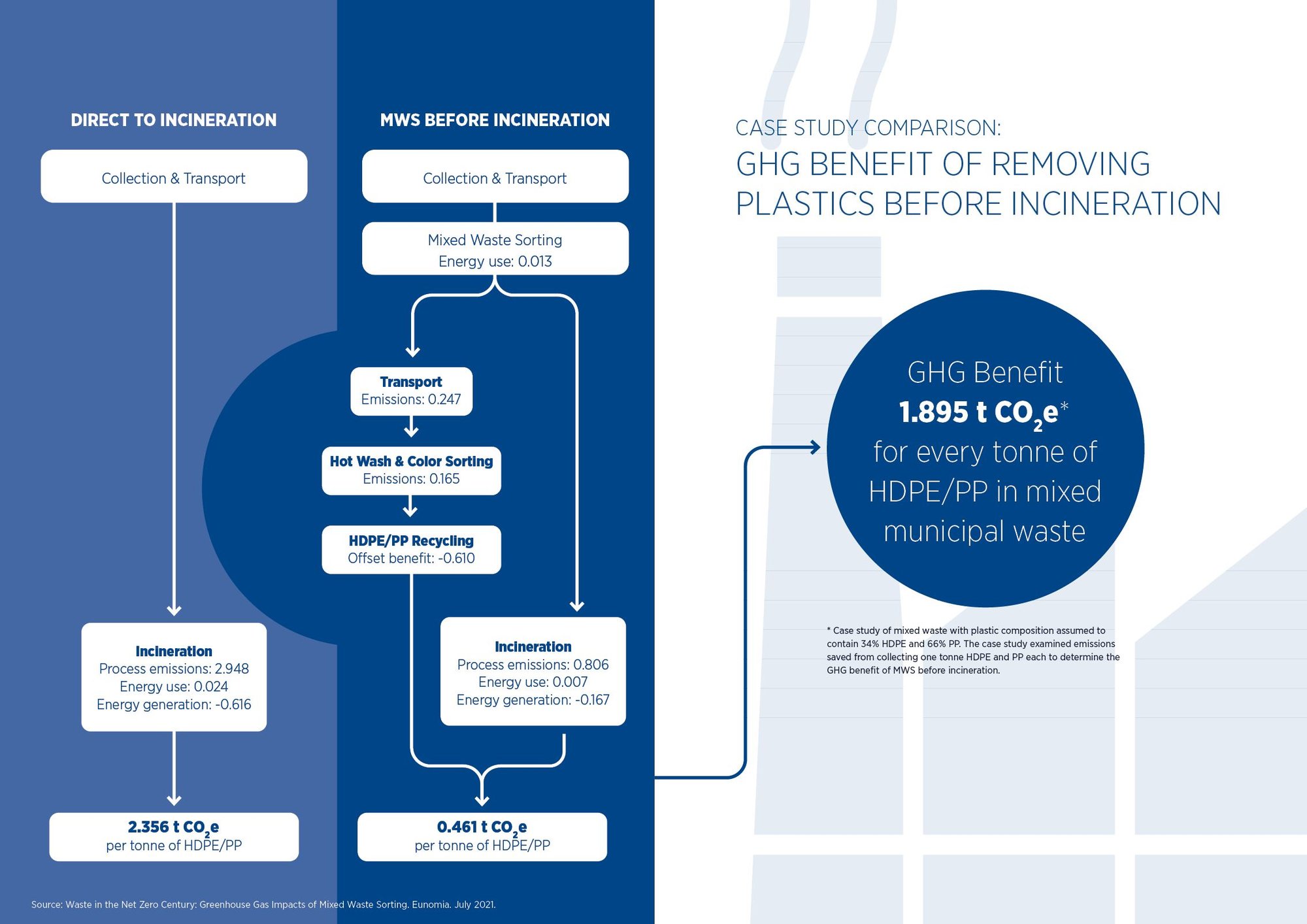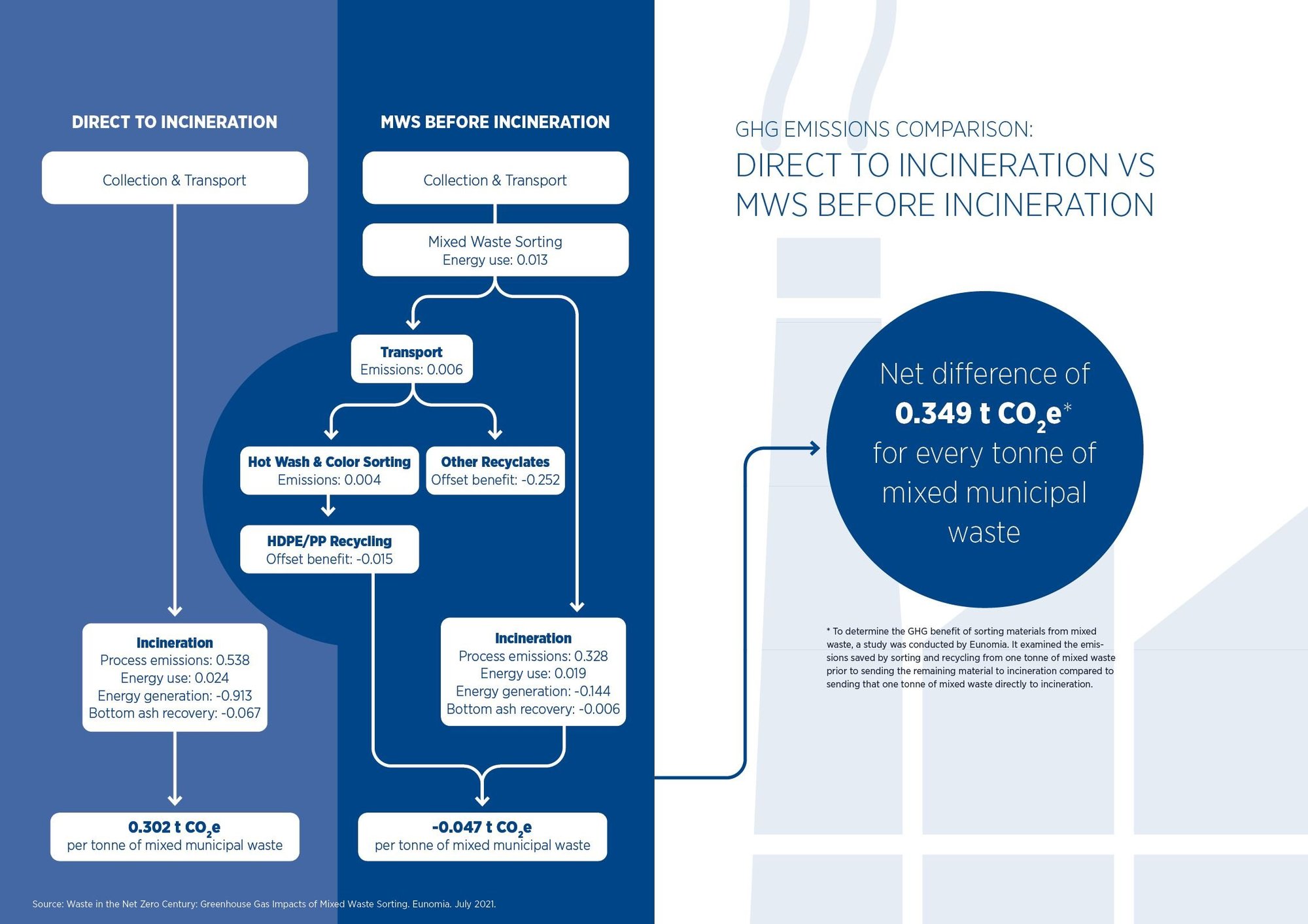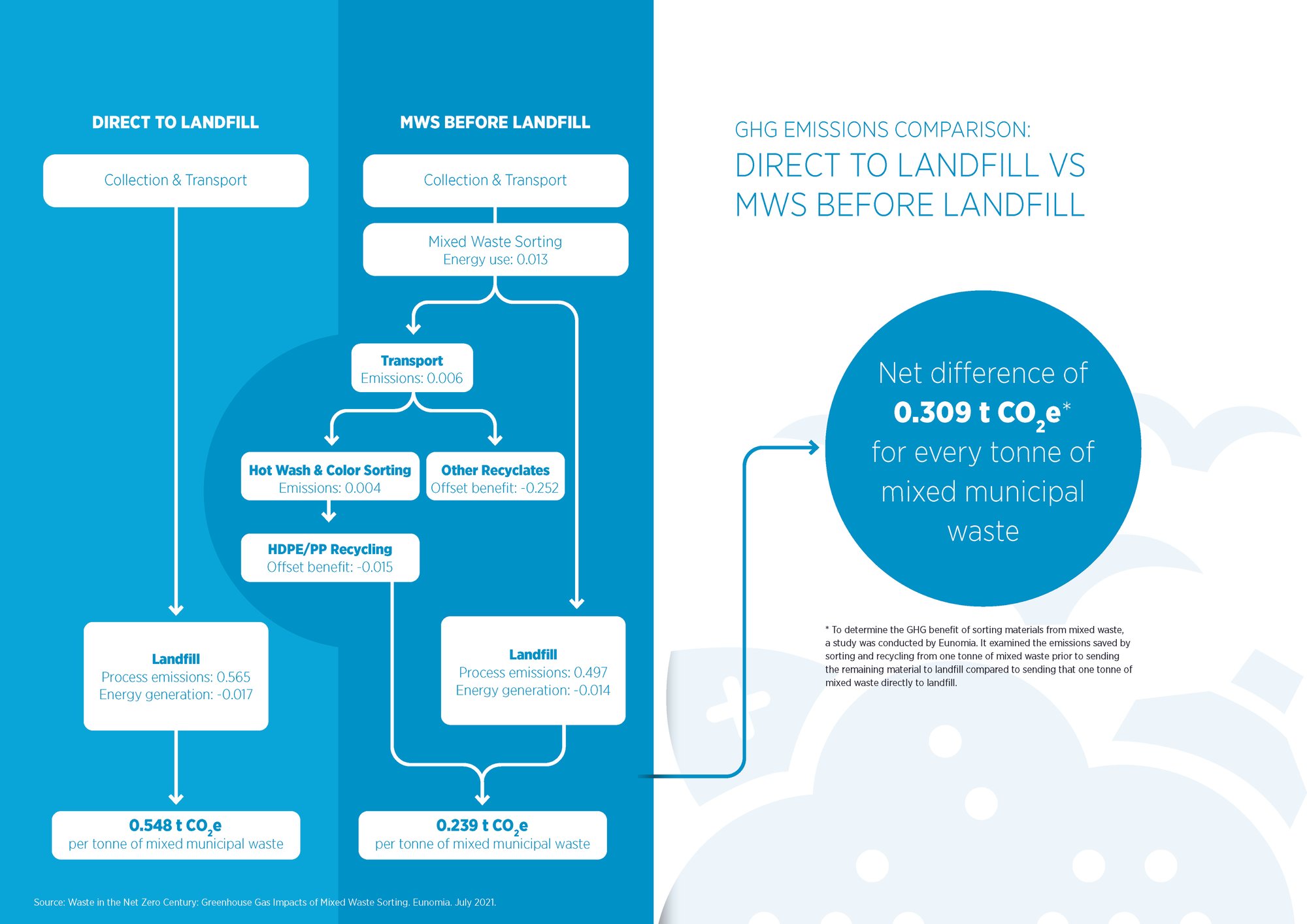Mixed Waste Sorting
If we collect and sort mixed waste materials before they are burned or tossed into landfills, we can avoid up to 730 million tonnes of CO2 emissions by 2030. Mixed Waste Sorting (MWS) is a solution to the plastic pollution problem that we can implement now.

Free download
The Ultimate Guide to Mixed Waste Sorting
We cannot rely on material-dedicated collection systems alone. Enter Mixed Waste Sorting, the system we explore in this white paper.
It’s undeniable: resources will remain limited if we burn more than we recycle. When we convert plastic waste into energy via incineration, or let its toxic components seep into our soil in landfills, we miss out on the recovery of recyclable materials, as well as a great opportunity to reduce emissions and curb the effects of climate change.
Mixed Waste Sorting (MWS), an intrinsic part of TOMRA’s Holistic Resource Systems (HRS), is a final stage solution for recovering recyclable materials such as plastics, metals and paper before residual waste is incinerated or sent to landfill. It serves as a recovery backstop for recyclable materials that are not captured by the two other processes that make up HRS: Deposit Return Systems (DRS) and Separate Collections.
Mixed waste sorting in action
Watch and learn how mixed waste sorting can help keep our materials in the loop by turning household waste into materials that can be remade into ready-for-market recycled content for new products and packaging.
TOMRA Talks Circular
Listen to MWS experts on our podcast, which aims to affect real change with real conversations.
Material recovery before incineration
By recovering carbon-intensive materials such as plastics and metals before waste goes to incineration or landfill, recycling rates are maximized and greenhouse gas emissions are significantly reduced across both waste and energy sectors. Adopting mixed waste sorting as a standard practice before residual waste goes to incineration and landfill could avoid up to 730 million tonnes of CO2e globally by 2030.
There has never been a greater demand for recycled content in the marketplace, and the trend is expected to continue. Yet common misconceptions about ‘dirty’ and contaminated plastic waste prevent momentous change that can significantly reduce global GHG emissions. Mixed waste sorting combined with advanced mechanical recycling unlocks the key to recovering and producing high-quality, odor-free recycled feedstocks. Finally, it is possible to create virgin-like recycled plastic from one of the world’s most abundant resources – municipal solid waste.
Until recently, plastics recovered from mixed waste were considered contaminated and of poorer quality. Today, automated sorting systems combined with advanced mechanical recycling transform these plastics into virgin-like recycled content through sophisticated purification and deodorizing technologies. The high-quality recycled plastics are ideal for non-food grade packaging, further accelerating the transition to a circular economy.
Mixed Waste Sorting in action
As a fundamental pillar of Holistic Resource Systems, MWS is necessary for closed-loop recycling and plastic sustainability. In Norway, waste management systems that introduced pre-sorting mixed waste captured more than double the amount of plastic packaging for recycling than other separate collection methods. By adding mixed waste sorting before incineration and landfills, the regions gained recycled content to meet market demands and simultaneously reduced GHG emissions.
Depending on local circumstances and where the resulting benefits outweigh the costs, MWS can also include target materials not captured by separate collections, such as paper, glass packaging and organic waste. In most cases, the overall system cost is reduced due to savings on residual treatment and substantial environmental benefits.
Moreover, sorting plastics and other recyclable content from municipal waste creates excess capacity at incineration facilities, simultaneously decreasing capital expenditures and meeting future demands. There is enormous potential to significantly reduce greenhouse gas emissions and supply secondary raw materials for today’s more sustainability-driven marketplace.
Mixed waste sorting combined with advanced mechanical recycling offers a field-proven method for rescuing finite resources from municipal waste and giving these materials new life in products and packaging. To meet climate targets, we must take swift action moving towards a circular economy, in which plastics and other viable materials are collected for recycling from all waste streams. Let’s aspire to give our resources more value and create holistic systems to ensure their longevity.
Mixed Waste Sorting
Learn more about Mixed Waste Sorting and why it's an integral part of Holistic Resource Systems.
.png?width=796&height=202&name=tomra_lockup_h_1cw_png%20(1).png)
.png?width=788&height=200&name=tomra_lockup_h_1cw_png%20(1).png)











